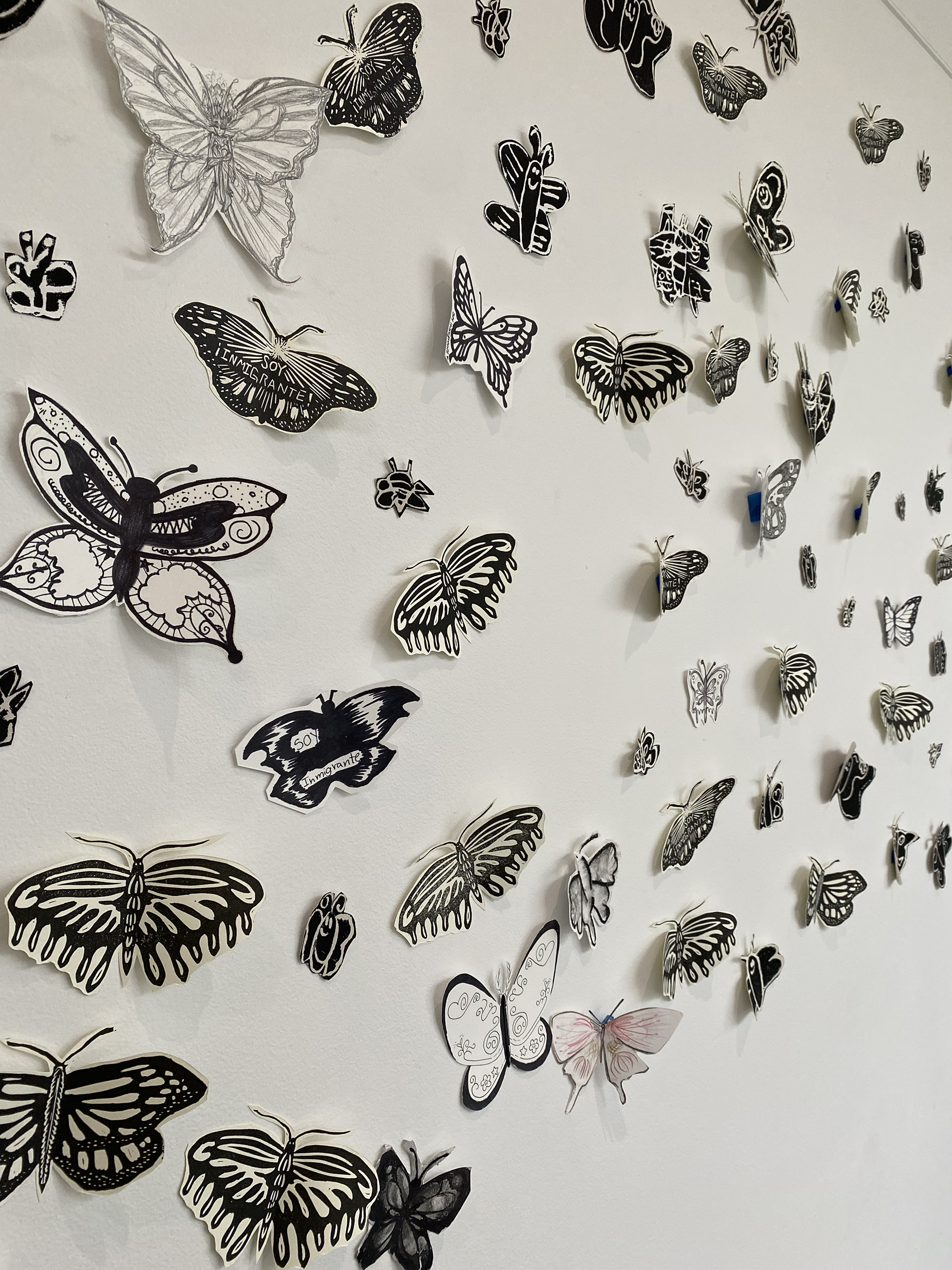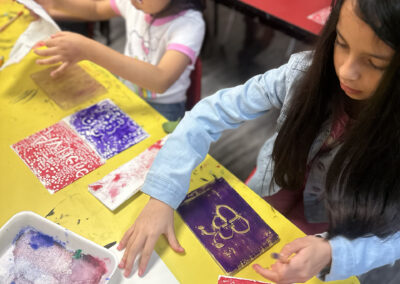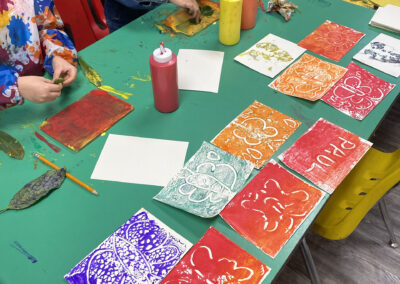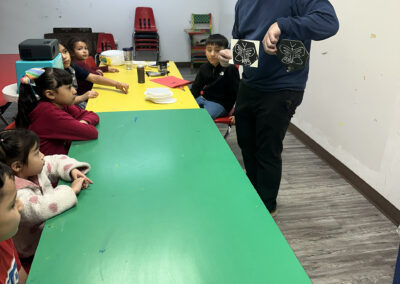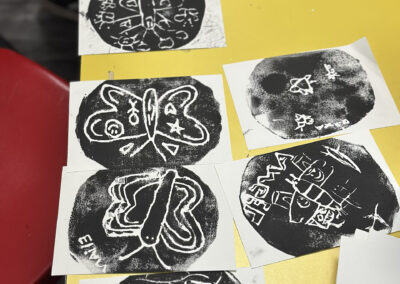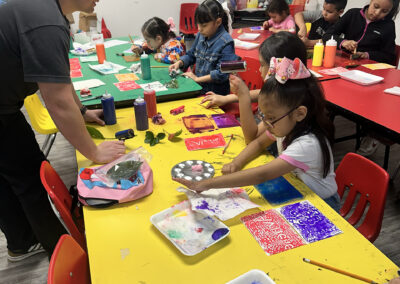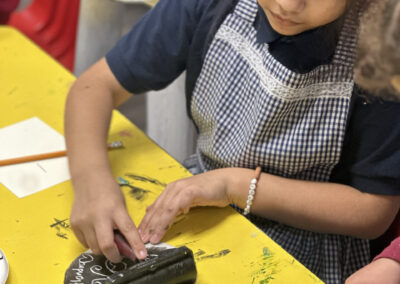Interview
Paul Acevedo Gomez: Into the Wild
“Into the Wild” is a regular interview with early career print artists. Interviews will highlight the varied paths the subjects are taking to strike an accord between life and their artistic practice. Expect a balance of approaches, from those hopping the residency circuit, to those teaching part-time or who snagged the elusive tenure-track gig right out of the gate, or those working a desk job or waiting tables to afford access to a community print shop or maker space. In short, there’s many ways to “make it” and we want to share them all!
Have an idea for a person to interview? Please submit suggestions to the Interviews section of the Submissions portal below.
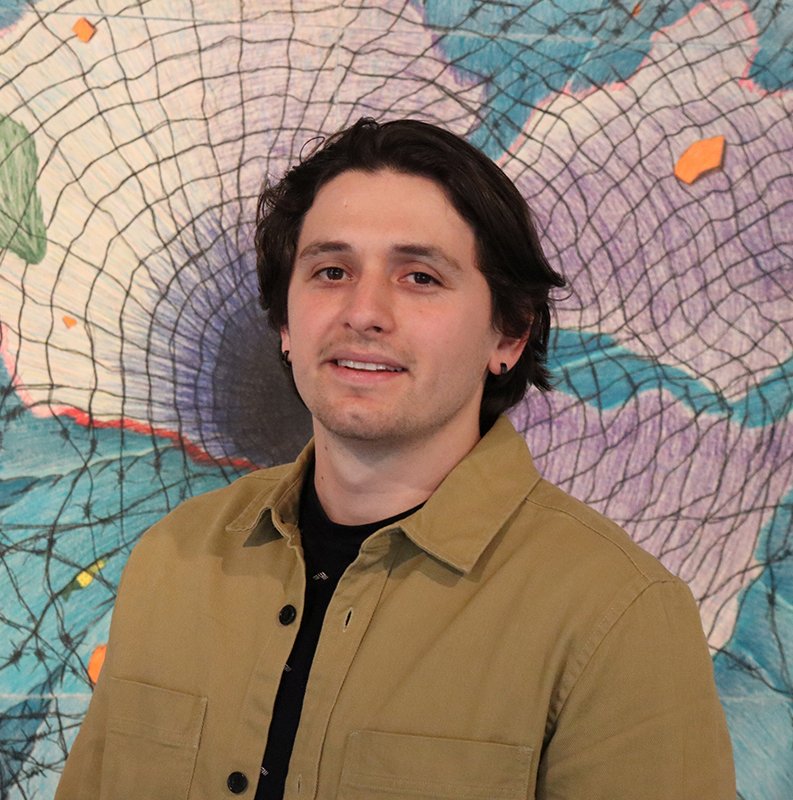
Paul Acevedo Gomez
Paul Acevedo Gomez is a Mexican American artist born and raised in Guadalajara, Jalisco, Mexico, Gomez received his BFA in Mixed Media from California State University Stanislaus in 2018, and Graduated from Louisiana State University with his Master of Fine Arts in 2022.
His work reflects his personal reflection of heritage, challenging the societal norms imposed by family values, the expectations of culture and religion, with influences of both Mexican and American pop culture. Gomez’s drawings are highly detailed and realistic, often featuring a mix of traditional drawing techniques and contemporary elements. He is known for his use of vibrant colors and dynamic compositions, which give his work a sense of energy and movement.
Throughout his career, Paul Acevedo Gomez has exhibited his work nationally, including Surreal Salon 14, Baton Rouge Gallery, Baton Rouge, LA, Pacific States Biennial North American printmaking exhibition Hilo, HI, Tapped 13, Artist and their Professors, Manifest Gallery, Cincinnati, OH, and Celebrate Print Juried Exhibition, Lawrence Art Center, Lawrence, KS.
Artist Statement:
Paul Acevedo Gomez’s work embodies personal mythologies derived from heritage, challenging societal norms imposed by family values, cultural expectations, and religious influences, while incorporating elements of both Mexican and American pop culture. Language plays a dual role in his work, acting as both a barrier and an additive element. Often, it reflects his unique identity, aiming to translate his ideas and experiences for the viewer to engage with and contemplate. His pieces are always in a stage of transformation, offering multiple perspectives on encountering past, present and future situations. Always seeking to respond to the existential questions of who he is, where he is, and where he is going.
His work is expressed through various mediums, Gomez’s compositions blend traditional techniques with contemporary elements including printmaking, paper works, sculpture, and drawing. Each of Gomez’s compositions feature a mix of vivid colors and black-and-white compositions, evoking somber and joyful moments with a sense of energy and movement. By working with a range of sizes and mediums, Gomez is able to recreate vivid memories and experiences that feel both intimate and ambitious.
The Interview
Blake Sanders: You grew up in Guadalajara, then went to college at California State University Stanislaus. What was it like going to school nearly 2,000 miles from home? What skills and life experience did you bring with you that prepared you for college, and how did Stanislaus prepare you for the next step? How did the shift in comfort and culture influence the work you made in college?
Paul Acevedo Gomez: As a Mexican Immigrant, having attended college in the US certainly had its challenges. I already had a lot of the language and social skills to navigate my environment. While taking art classes at CSU Stanislaus I was eager to learn and experiment with different materials, especially in printmaking. I developed a fascination for lithography after learning from my professor Marty Azevedo and watching him create intricate multicolor prints. I would later in the course of my time at CSU Stanislaus develop my work through a nostalgic lens, some of the inspiration would come from missing family and recollecting personal memories. Having experienced different cultures and social norms definitely helped my experience, as I was able to showcase said experiences in my work and create a sense of belonging for myself.
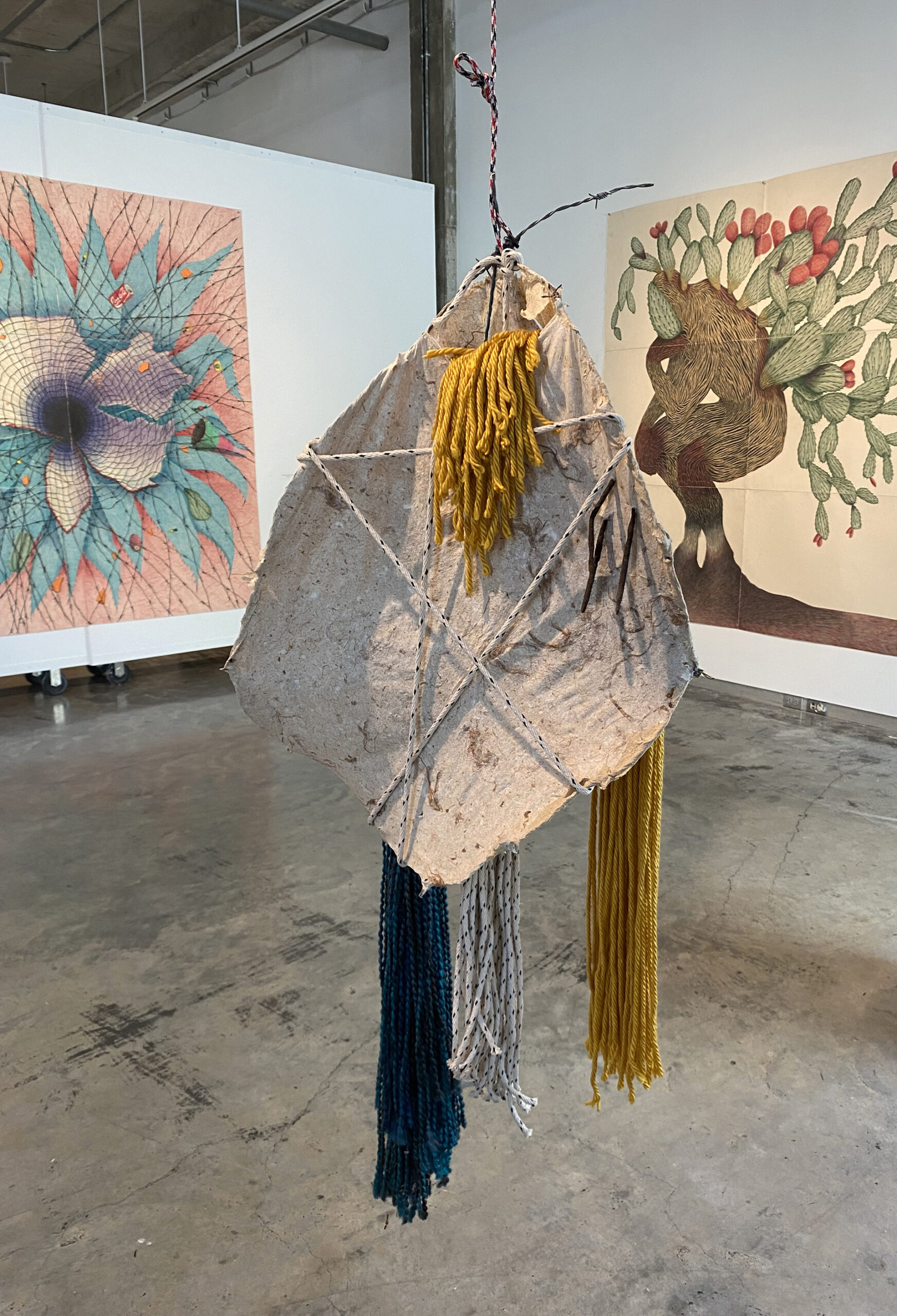
Tradition
Handmade paper, barbed wire, charcoal, rope
1’x2’
2022
BS: You graduated from Louisiana State University Spring 2022. How did you choose the program? Did you take advantage of the school’s large format print and papermaking capabilities? How did your practice evolve in graduate school?
PAG: There were many factors on why I chose to go to LSU. From the start, I knew I wanted a 3 year Graduate program where I could also get teaching experience, LSU was able to offer student teaching opportunities, and they had a pretty good stipend that I couldn’t refuse. I also knew I wanted to be in a program where I could focus on developing my skills in lithography. At LSU I was the studio area manager for Lithography, and their large scale format printing made it even more exciting for me to develop large prints and continue to practice my skills as a printmaker.
Over the course of the three years at LSU, my work began to become more and more multidisciplinary, continuing to create large prints, and even bigger drawings and sculptural forms incorporating fibers and handmade paper. The work still spoke about my personal experiences, and my immediate surroundings, especially living in the south and experiencing new and surreal landscapes like the ones in Baton Rouge and New Orleans.
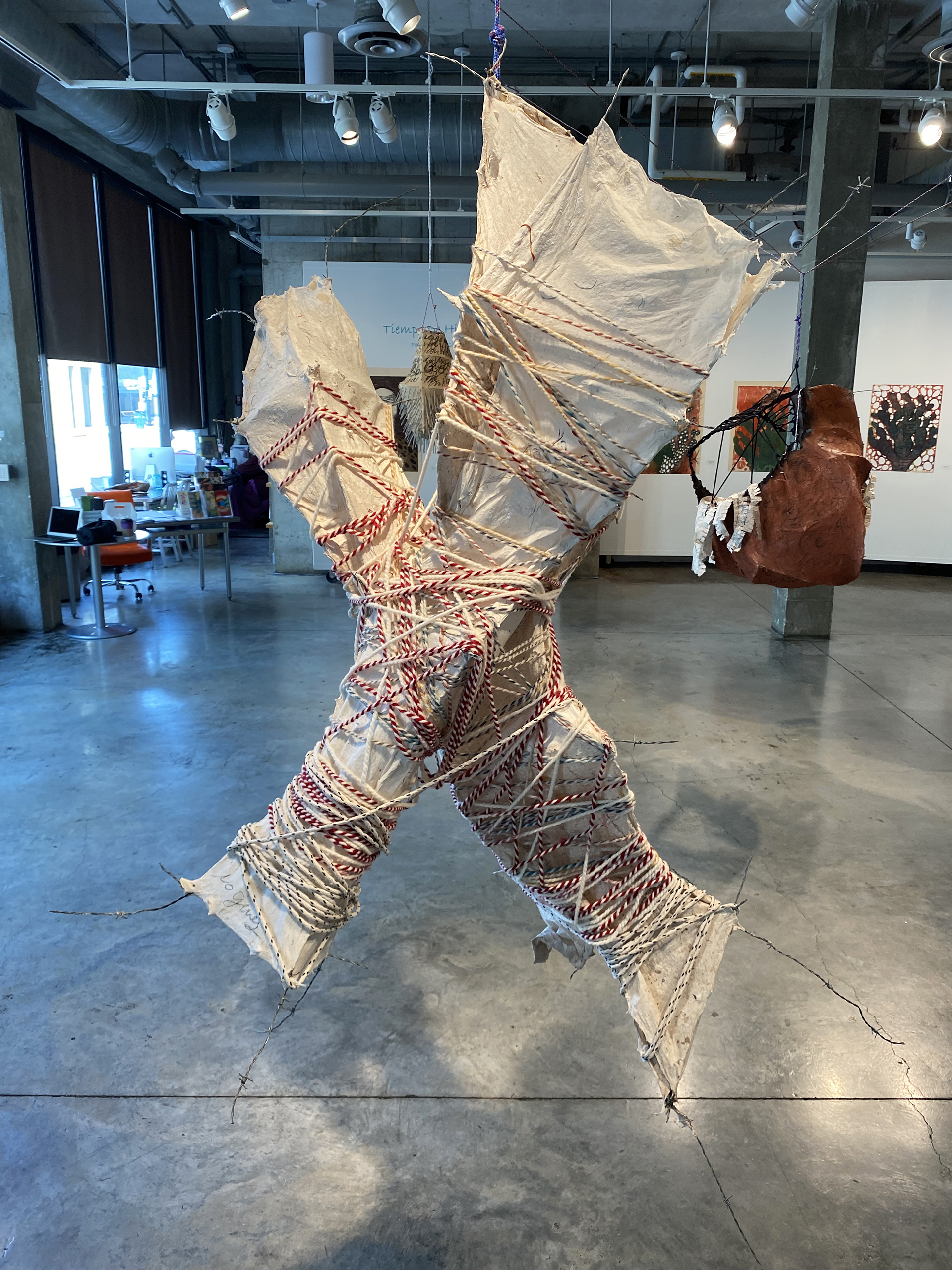
Los Tres Hermanos
Handmade paper, barbed wire, yarn, rope
6’x7’
2022
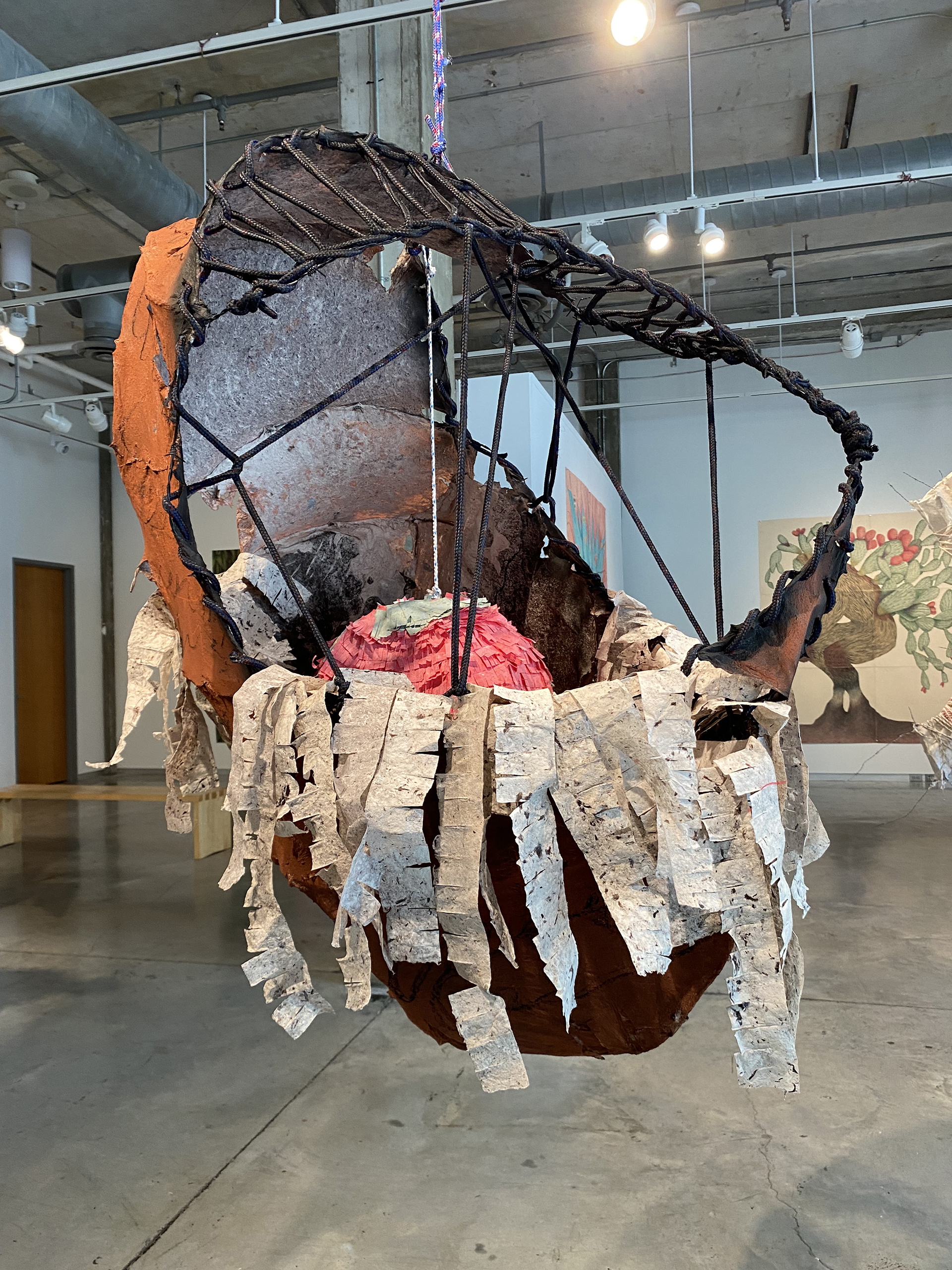
Strawberry Oxide
Handmade paper, barbed wire, yarn, red oxide pigment, rope
4’x4′
2022
BS: While in graduate school you were an assistant at Blackbird Letterpress, a local print shop in Baton Rouge. The discipline of letterpress seems temperamentally different from the loose, expressive aesthetic of your personal work. How did your letterpress experience influence your practice?
PAG: Working at Blackbird Letterpress was an amazing experience that I will always cherish. I was able to make great connections with Kathryn Hunter, and develop a deep love for letterpress printmaking. I gained a lot of great experience not only in working with new equipment, but also developing attention to detail, quality of the work, and the business side of managing a commercial printshop. During that time, I had the opportunity to produce some of my own prints and yet had the ability to Go Wild in an organized manner. Overall, the experience felt unique and I cherish the value of letterpress printmaking, along with the opportunities to develop new skills as a printmaker.
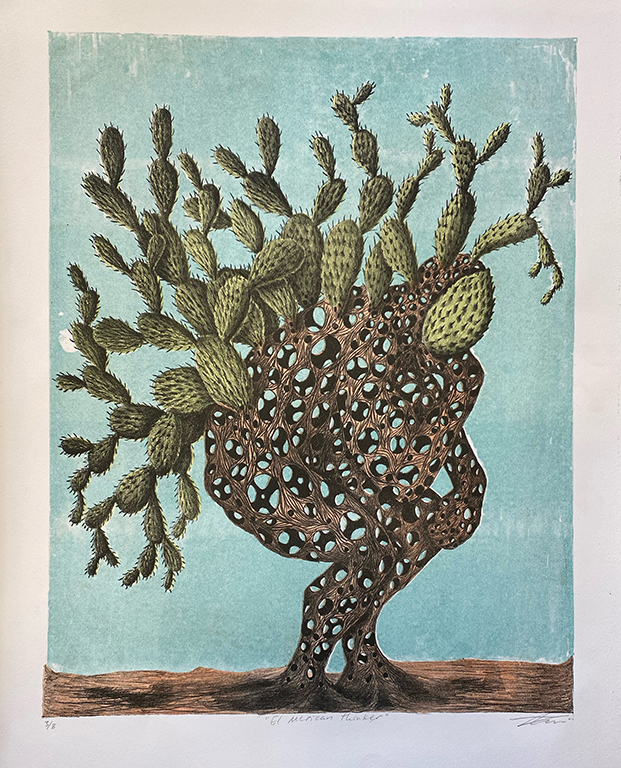
El Mexican Thinker
Lithograph
18″x24″
2023
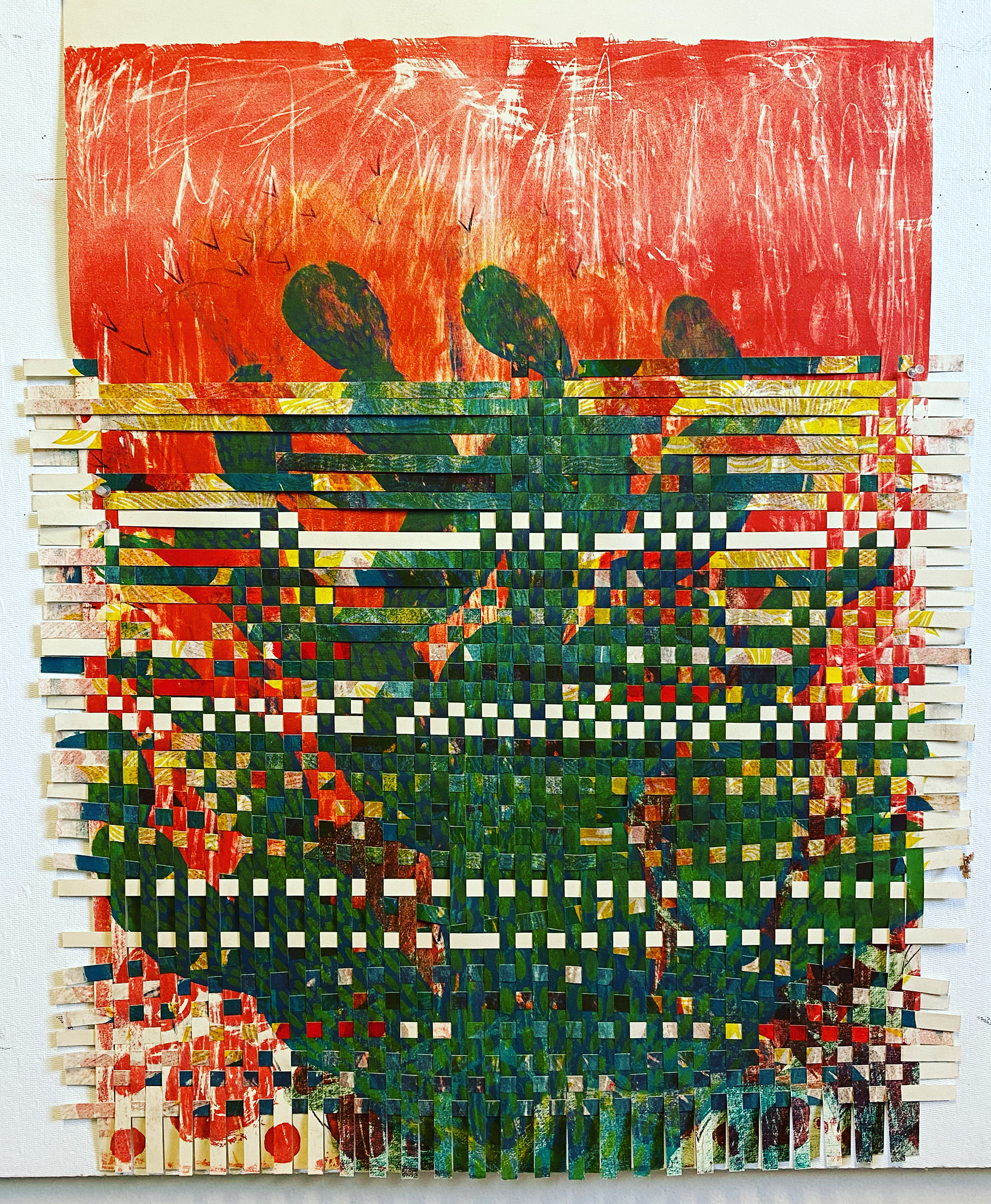
Nopal
Paper weaving and lithograph
30″x24″
2024
BS: LSU will host the 2026 MAPC conference. Will you return to help out, or just reconnect with friends? What should printmakers seek out as they look forward to the conference? What did you discover in Baton Rouge that you weren’t expecting?
PAG: It would be awesome to help out during MAPC at LSU whether doing a demo or proposing a print exchange. But I would also be happy to enjoy the conference and simply reconnect with friends and faculty. I would recommend printmakers to go check out the Baton Rouge Gallery, the LSU Museum of Art Downtown, the Hill Memorial library on LSU campus for their special collections, as I’m sure they will collaborate with the Printmaking department during the conference and will have amazing hand made and historical printmaking books available for everyone to see! Also, pay a visit to Blackbird Letterpress!
Some of the food staples I would recommend would be the Chimes, Schlittz & Giggles Pizza, Roul’s Deli, Highland Coffe, Magpie cafe, Elsie’s Pie Place and Louie’s Cafe. (As a former Baton Rouge resident I also endorse many of these spots!)
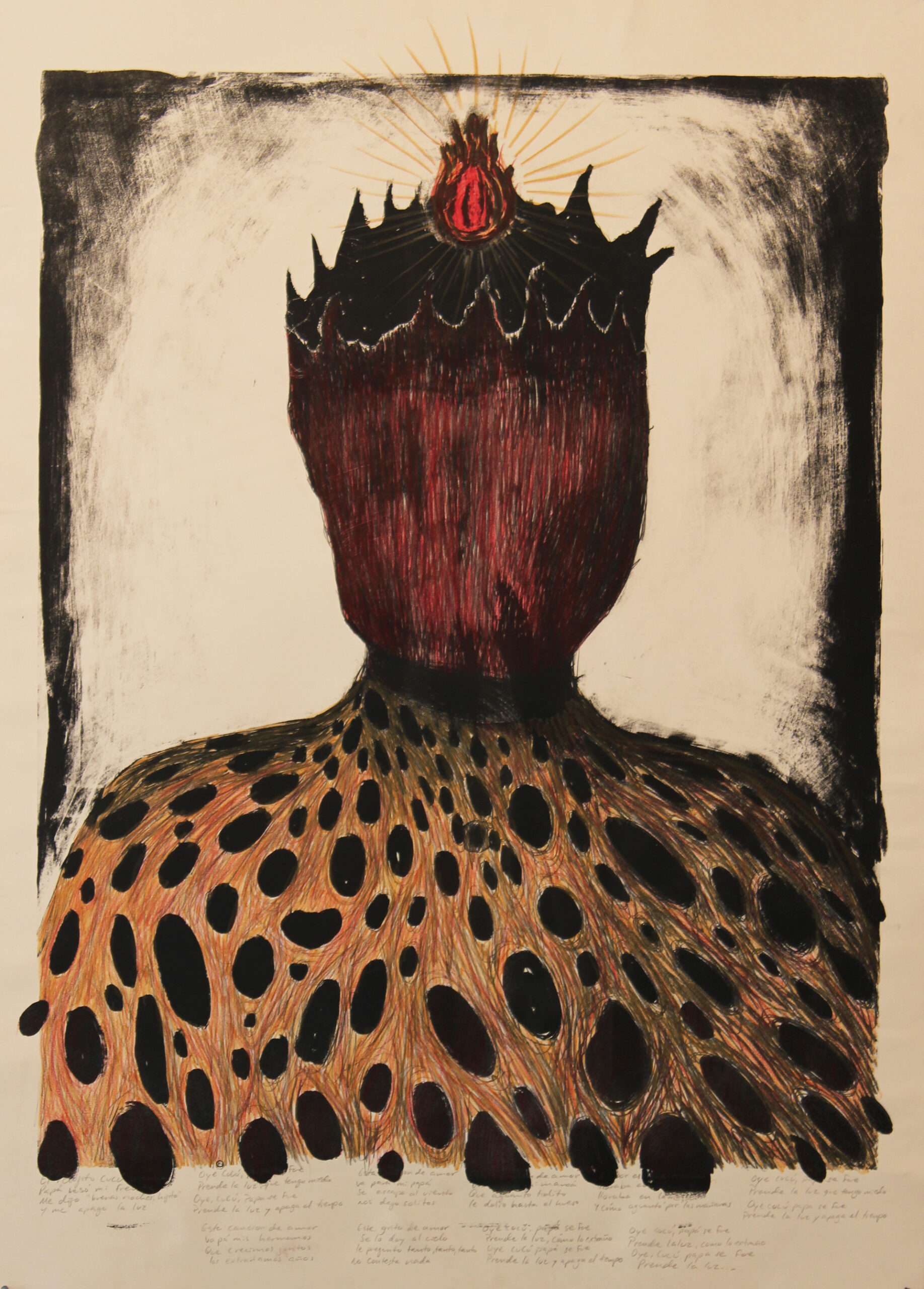
El Grito
Lithograph
44″x30″
2022
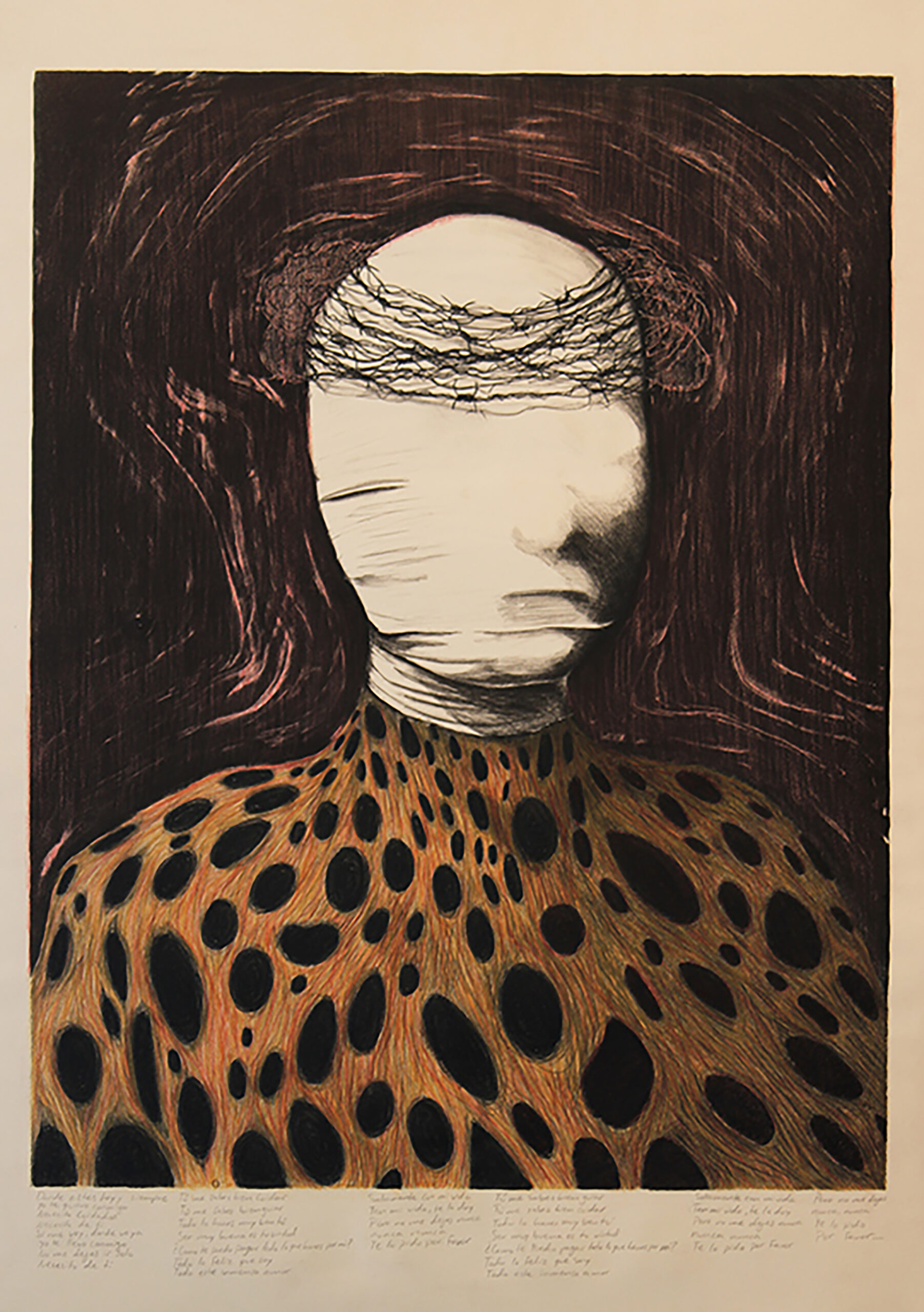
San Juditas Tadeo
Lithograph
44″x30″
2022
BS: For the last few years you have been on the art faculty at Tulsa Community College, where your pedagogical focus appears to be on equity in the classroom and serving a diverse student body. How do your educational experiences influence your approach to teaching and addressing the experiences and needs of your students?
PAG: In my educational experience, I was encouraged to explore multiple creative outlets, I was working in printmaking, sculpture, drawing, and papermaking, Exploring multiple media to create my work. When It comes to my teaching, I challenge students to go beyond the boundaries of their chosen medium and encourage multidisciplinary exploration. Most assignments are highly involved, so I meet with each student one-on-one in every class to discuss and troubleshoot ideas, successes, and challenges. This regular interaction fosters dialogue and establishes a mentorship role that might otherwise be overlooked. I provide students multiple examples of work from previous classes, guest artist lectures, and demonstrations, and historical and contemporary references to highlight each medium that we are working with.
Each of my students have different skill levels and ways of communicating their ideas. I try to foster an environment where I can cater to each student’s needs and make sure that each of their expectations are met as well as mine.
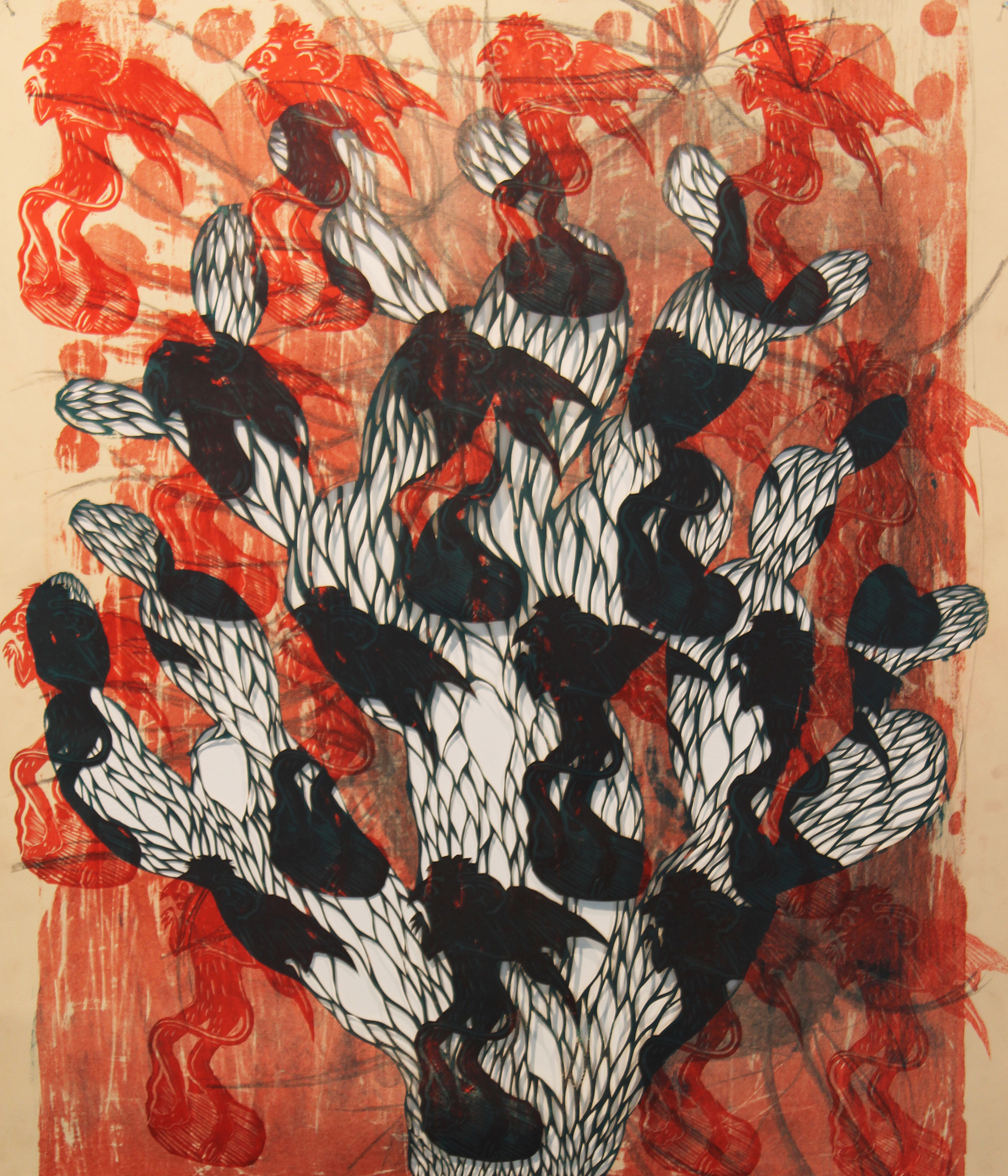
El Diablito
Lithograph
30″x22″
2022
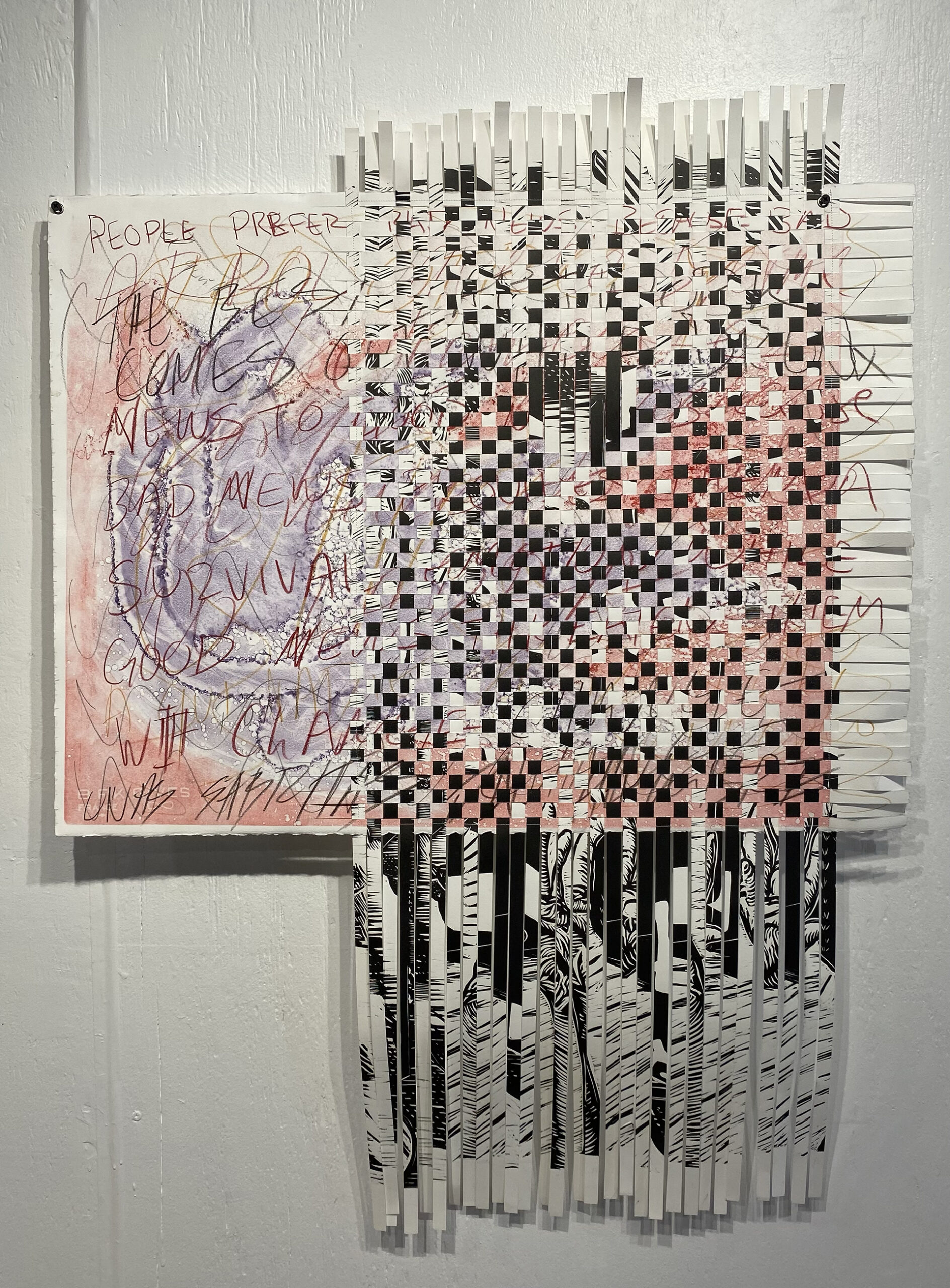
Invasion
Paper weaving and monotype
34″x30″
2024
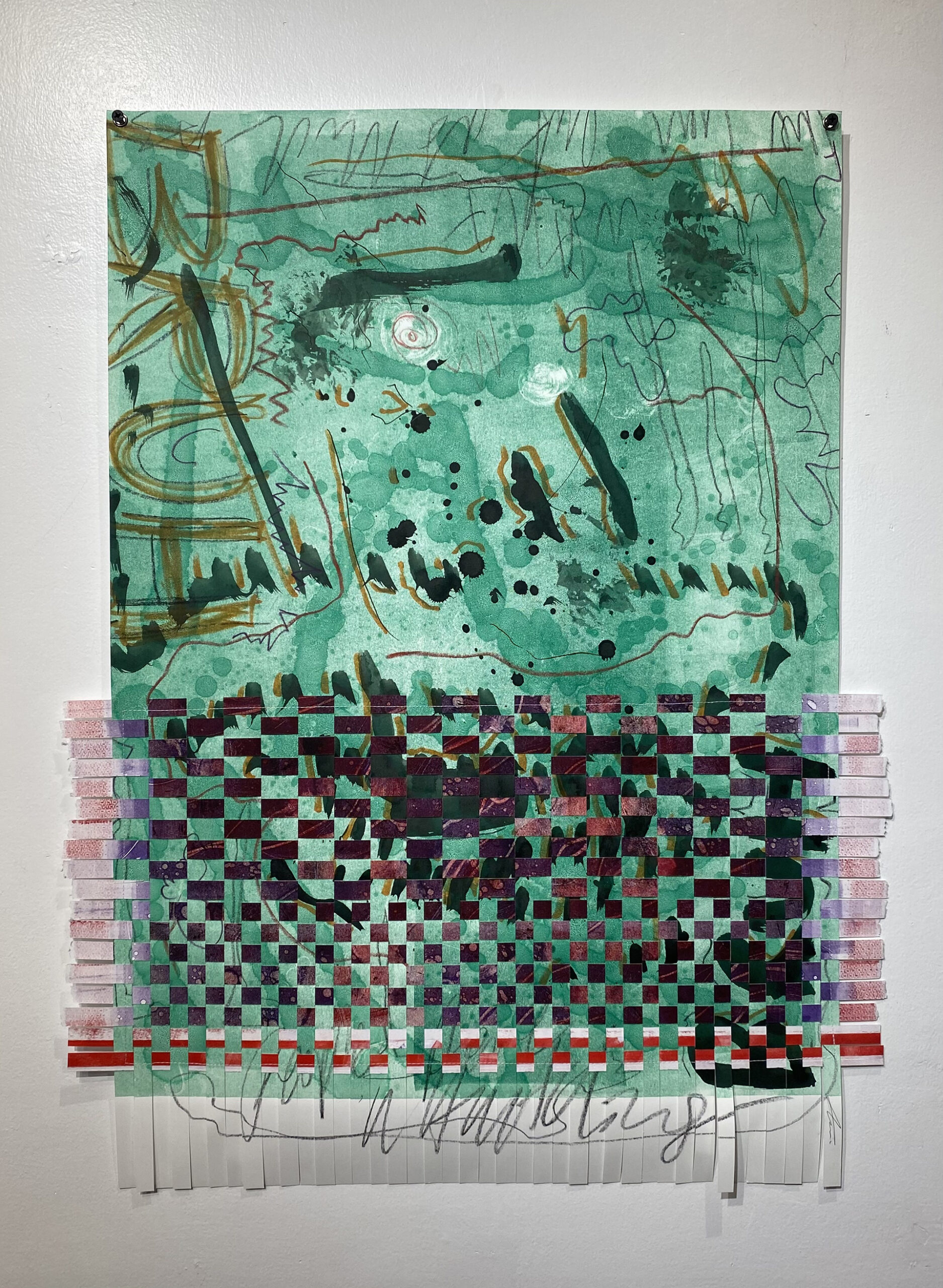
BRUH
Paper weaving and monotype
24″x18″
2024
BS: Your practical philosophy of print appears expansive, incorporating lots of other media into your print practice. How does print serve you in your creative work? Where does it provide needed parameters and where are unnecessary encumbrances?
PAG: Printmaking has always been the foundation for my work, whether I’m creating large drawings or 3D Dimensional work, there is always some printmaking component that appears in the work. I think like a printmaker, so I always think about layering information on top of each other. My practice is systematic and also intuitive. I enjoy the tradition of multiples and creating limited editions of prints, but I am also not shy about manipulating misprints and creating something new out of them like a weaving or creating book covers for bookbinding. I like to think that there is more potential for the things we might sometimes try to discard.
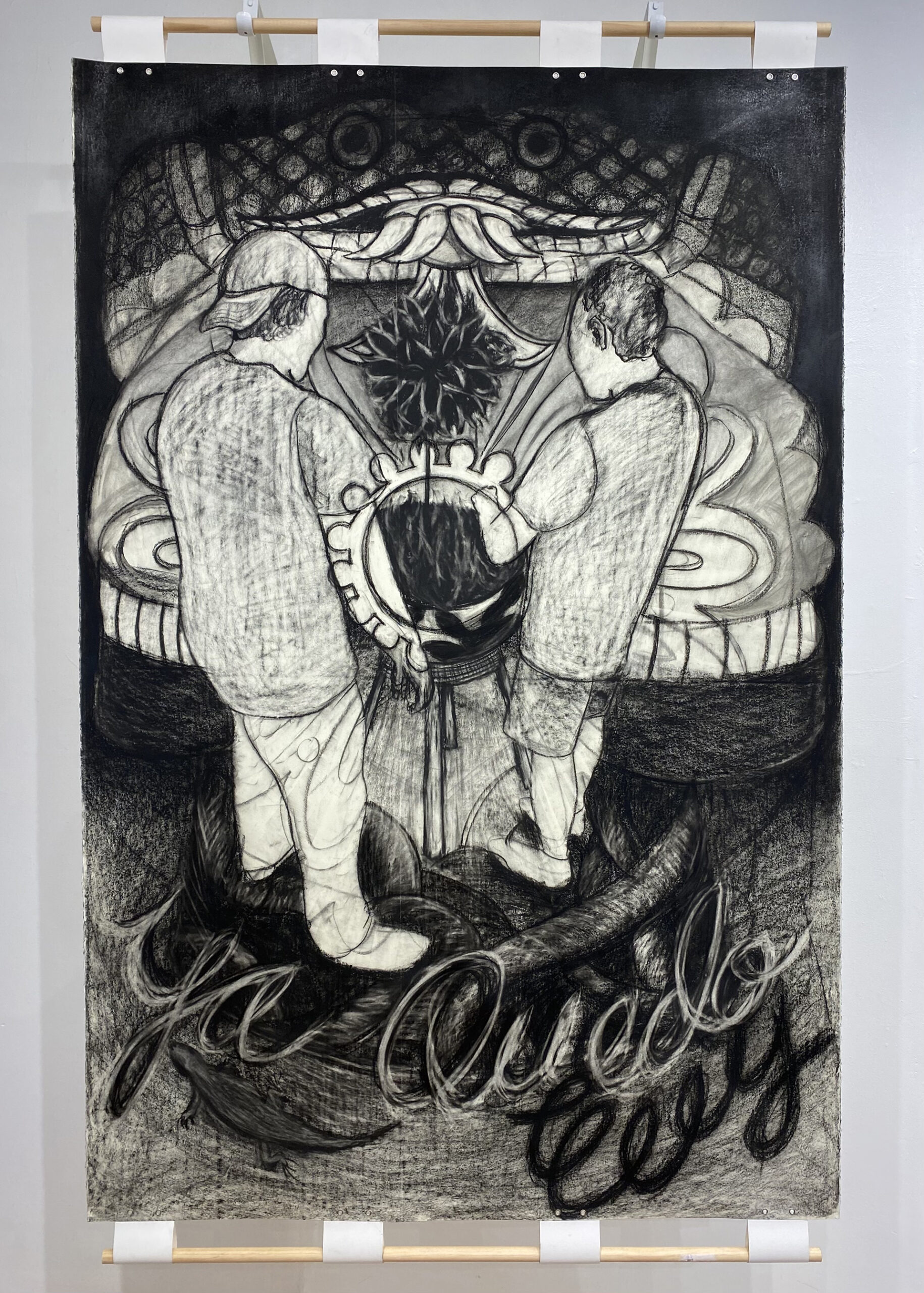
Ya Quedo
Charcoal drawing
6’x4′
2024

Do It All for Her
Charcoal drawing
6’x4′
2024
BS: Please tell us more about your work and how your practice has evolved since graduate school. What has inspired or forced change? What continues to inspire you?
PAG: Since I graduated from LSU, My work has evolved to take on new materials and explore new mediums such as paper weavings, bookmaking, and utilizing new technology to create drawings using digital applications, and manipulating images to create content for bigger works. I’m currently revisiting relief printmaking and have recently started to shift the intention of my work to focus on a community based project. I am working with the community in Tulsa, and extended the invitation to printmakers all over the country to participate and create an installation piece that involves making Prints of Monarch butterflies as a metaphor to speak about social and political themes such as immigration, generational change and transformation.

El Mexican Thinker
Color pencil drawing
7’x7′
2022
BS: What are your goals for the next couple years? How have your goals/priorities changed since entering teaching? Are you on a track that feels rewarding and sustainable?
PAG: I hope to continue my teaching career as I come to the end of my faculty fellowship this semester at Tulsa Community College. My goal is to continue being a mentor and continue to inspire students to create meaningful and personal work. Not to mention being able to bring them to SGCI and MAPC to connect with other printmakers and build lasting friendships. I want to help them expand their practice along the way whether through printmaking or any different medium that fits their ideas. I hope to continue my path as an instructor, and continue to develop my teaching experience. I do believe this is a rewarding and sustainable path that I’m pursuing. It not only allows me to be a mentor, but it also provides the ability to continue a sustainable art practice.
Project Monarch Butterfly Workshop 2025
Casa De La Cultura, Tulsa, OK
BS: What advice would you give current students as they’re about to journey into the wild? What do you wish you’d been told or prepared for?
PAG: The biggest advice I would give students is to prepare themselves to become practicing artists by going to gallery shows, museums, attending conferences and building connections. The most important thing is to make make make! Whether you are a beginner or have been in the game for a while, continue to make art and have fun doing it! Your style might change and your ideas might change too, but the important thing is that you evolve and grow as an artist and don’t be afraid of change.
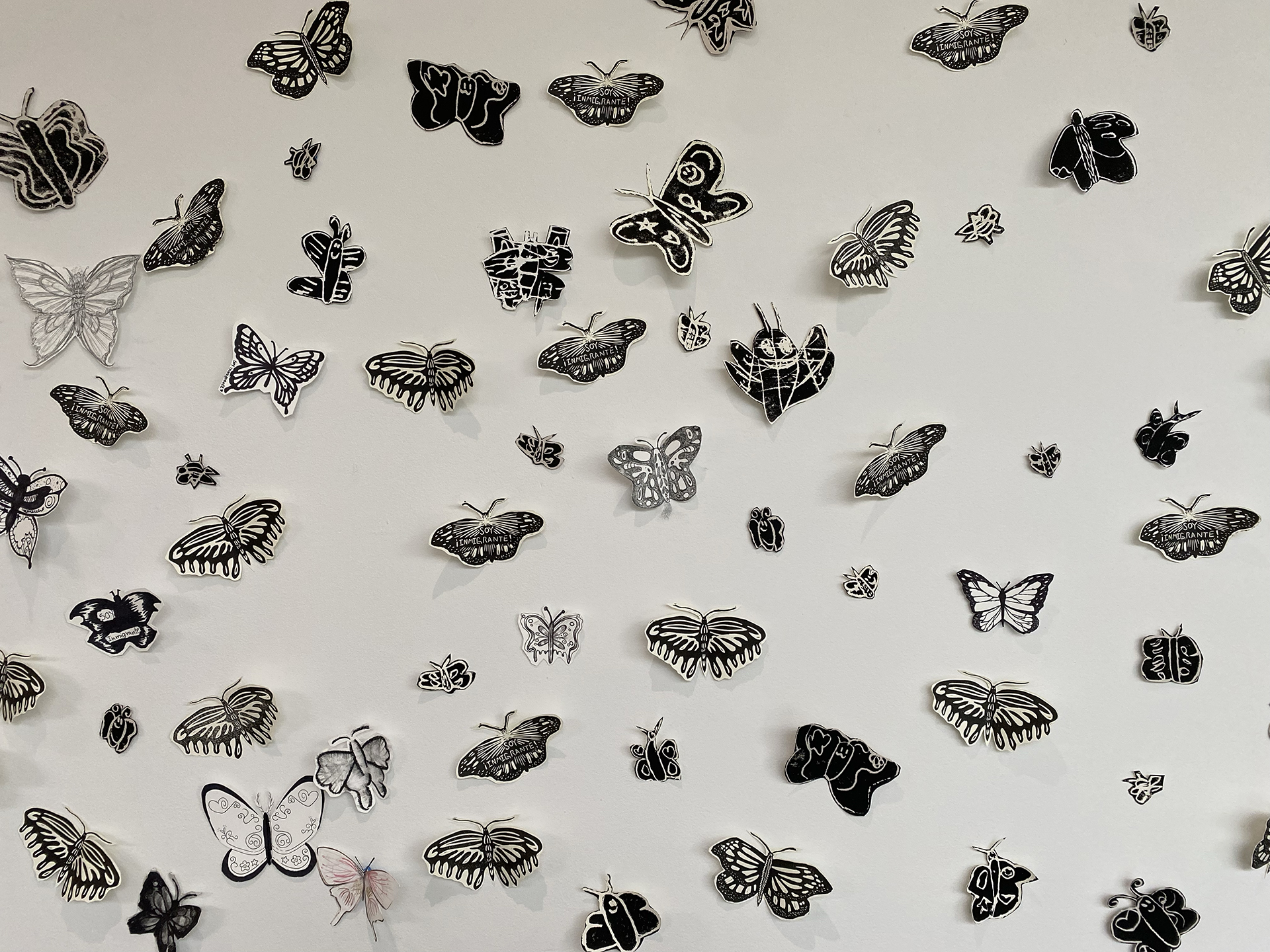
Project Monarch Installation shot 2025
Relief and drawing
2025
